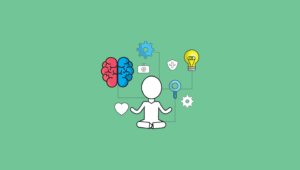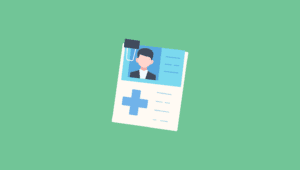Lewy body disease is second only to Alzheimer’s disease as the most commonly occurring type of dementia today. But you might not know it.
In fact, many people have never even heard of Lewy body disease, let alone the stats on its prevalence.
We can’t even come to a consensus on a singular term for it. Lewy body disease is also commonly known as Lewy body dementia, or dementia with Lewy bodies. All these terms are used interchangeably to refer to this condition.
Lewy body disease doesn’t yet have the same name recognition power as some of its cognitive counterparts. Hopefully, that will change.
Lewy body disease is an important issue to keep tabs on—so you can recognize its signs and symptoms if they ever impact someone you love.
Now, there are some good reasons why Lewy body disease (or LBD as it’s often abbreviated), isn’t yet well known among the general population. For one thing, it was only fairly recently recognized and categorized as a distinct type of dementia.
Although the mechanisms that cause Lewy body disease were discovered in the early 1900s, the publication of specific criteria for diagnosing LBD wasn’t created until 1995.
The reason for this lag is complex and multifactorial.
For a long time, it was difficult for scientists to distinguish Lewy body dementia from the similar dementias that occur in other conditions, like Parkinson’s disease.
Until our scientific capabilities and methods advanced, it was impossible to assess exactly what was happening in the brain and body in order to identify key differences that warranted separate classifications.
Now that Lewy body disease occupies its own spot under the dementia classification umbrella, advancements in research and clinical practice have offered us a better understanding of this distinct issue and its effects. They’ve also informed new and more targeted treatment efforts.
There’s so much to learn about this unique and prevalent type of dementia. Let’s dive into understanding of what LBD is, how it shows up, and what can be done if it impacts you or your loved ones.
What is Lewy Body Disease?



Lewy body dementia is a progressive, degenerative brain disease that impacts cognitive functioning in those who experience it. Like Alzheimer’s disease, LBD causes irreversible damage to the brain, impacting thinking skills, motor skills, and functional abilities.
An estimated 1.4 million people in the United States have Lewy body disease. In fact, it’s the type of dementia Robin Williams was diagnosed with before his untimely passing.
For a long time, Lewy body dementia was conflated with Parkinson’s disease. That’s because there’s a wide overlap of symptoms in these conditions. This is likely because they share an issue with the ability to process a specific protein in the brain. The protein build-up is responsible for similar outward symptoms.
Are you ready to get into some neuroscience?
Ok, here goes…
Our brains run on protein. Second only to water, it makes up a massive amount of matter in the brain. Your brain depends upon the amino acids found in proteins to function properly. Your brain uses these protein-provided amino acids to create neurotransmitters. And neurotransmitters allow your neurons to communicate with one another.
So, protein is literally the foundation of your brain’s ability to share information and signals quickly and effectively.
You can imagine, then, that any issues involving the proteins in your brain could cause some serious problems.
And that’s exactly what happens in Lewy body disease.
Way back in 1912, the clusters of accumulated proteins in the brain that are the defining characteristic of Lewy body dementia were first discovered. In 1919, they were named after one of the German scientists who identified them—Friedrich Lewy.
Lewy bodies, as they’ve since been known, are tangled clusters of alpha-synuclein protein. These protein accumulations build up in neurons, clogging them and blocking their ability to send and receive signals.
These protein accumulations are also present in the brains of people with Parkinon’s disease and Alzheimer’s disease, as well as several other disorders.
The common term used to describe these similar conditions is synucleinopathies. This term points to their common pathology of alpha-synuclein protein build-up that produces similar outward symptoms.
Lewy bodies particularly like to cluster in areas of the brain tasked with motor skills and memory function. Hence, motor control issues and memory problems are primary characteristics of Lewy body dementia.
But these aren’t the only common symptoms of Lewy body disease. Let’s take a look at some other signs and symptoms that are typical of LBD, to help you recognize them.
What are the Signs and Symptoms of Lewy Body Dementia?



As of now, the exact cause of Lewy body dementia is unknown. But age is considered to be a risk factor, as symptoms typically begin at age 50 or older.
The symptoms of LBD vary, depending on the stage and where the offending proteins are accumulating in the brain.
Some commonly-seen symptoms of dementia with Lewy bodies include—
- Memory issues
- Movement problems, including—
- Tremors and shaking
- Muscle rigidity
- Difficulty walking
- Balance problems
- Coordination issues
- Attention problems
- Alertness issues (such as excessive sleepiness)
- Behavioral and personality changes
- Visual hallucinations
- Sleep problems
- Mood disorders (including depression and anxiety)
Because LBD is progressive, these symptoms will worsen over time, and more will appear.
Ultimately, people with Lewy body dementia will require additional daily assistance and support to safely and successfully navigate their daily lives.
If you know or suspect your loved one may be dealing with Lewy body disease, it’s smart to plan ahead and stay proactive. Although there’s no cure for the condition at this time, there are ways it can be managed and understood—to help your family cope.
Let’s explore some ways you can support your loved one with LBD—as well as yourself.
What Can I Do If I Know Or Suspect My Loved One Has Lewy Body Disease?



As we mentioned above—staying proactive is a positive strategy for coping with an LBD diagnosis in your life. But what are some ways you can put this advice to work for you?
Resources on Lewy Body Disease
Knowledge is powerful. There are many organizations dedicated to informing the public about issues like Lewy body dementia.
The Lewy Body Dementia Association is a non-profit organization focused on educating and supporting people with LBD and their caregivers, as well as promoting scientific research into the condition.
Here’s a link to some helpsheets, created by Dementia Australia. This organization is focused on promoting dementia awareness in Australia and worldwide.
The Alzheimer’s Association is another helpful resource for those seeking information about all types of dementia. Here is their page dedicated to dementia with Lewy bodies.
The Michael J. Fox Foundation for Parkinson’s Research shared this helpful LBD question and answer post, which includes some proactive prevention strategies, and information about current research efforts into LBD.
Therapies & Strategies for Lewy Body Disease
While there’s not yet a cure for Lewy body disease, there are therapies and strategies used to help manage symptoms.
Doctors use certain medications to help address and manage the psychiatric, motor, and cognitive symptoms of Lewy body disease. Counseling services are also used in some cases, to help both those with LBD and their family members to navigate this difficult issue.
Skilled rehabilitation professionals such as physical, occupational, and speech-language therapists can assist with symptom management. They can support individuals and families in focusing on functional maintenance strategies and staying ahead of disease progression.
But knowledge and medical treatment plans are only part of the equation. When you or someone you love receives a diagnosis of Lewy body dementia—it can be life-altering.
The Importance of Self Care



It’s also vitally important to practice self care and remember to tend to your emotional health and well-being.
For many, this is easier said than done. But taking care of yourself remains a key component of successfully navigating any major change in your life.
If you’re in need of a community who understands what it’s like to live with Lewy body dementia, here’s a link to search for LBD support groups in your area.
Here’s a helpful handout that lists some self-care and resilience tips you can implement. Meditation is a spiritual self care strategy mentioned specifically in this handout.
If you’re interested in trying meditation but unsure where to start, there are several free apps you can try out to see which one is a good fit for you. Insight Timer, Headspace, and Aura are just a few that offer free options.
You can also pursue outside help with supporting your mental health and wellness. Counseling and therapy can be beneficial in both the short and long term when you’re dealing with a crisis or changing dynamics in your life and family.
Psychology Today is a free tool you can use to search for mental health providers by location and speciality.
This article from the American Psychological Association reviews the ways psychologists and other mental health professionals can support both individuals with dementia and their loved ones and caregivers, as well as why this is an important component of your dementia care plan.
If your family’s life has been impacted by Lewy body dementia—you are not alone. Hopefully, increased awareness can shine a light on this prevalent condition, and lead to more effective treatments and even a cure.
In the meantime, you can use the information and resources in this article to deepen your understanding of this condition and help you connect with your own dementia support system.
Speaking of support—WayWiser is always here to uplift and assist you with information, advice, and insight about issues that matter to older adults and their loved ones. Visit our website often for quality content that meets the moment, and keep a close eye on our Word to the Wise blog as we explore topics of interest and importance to you.







